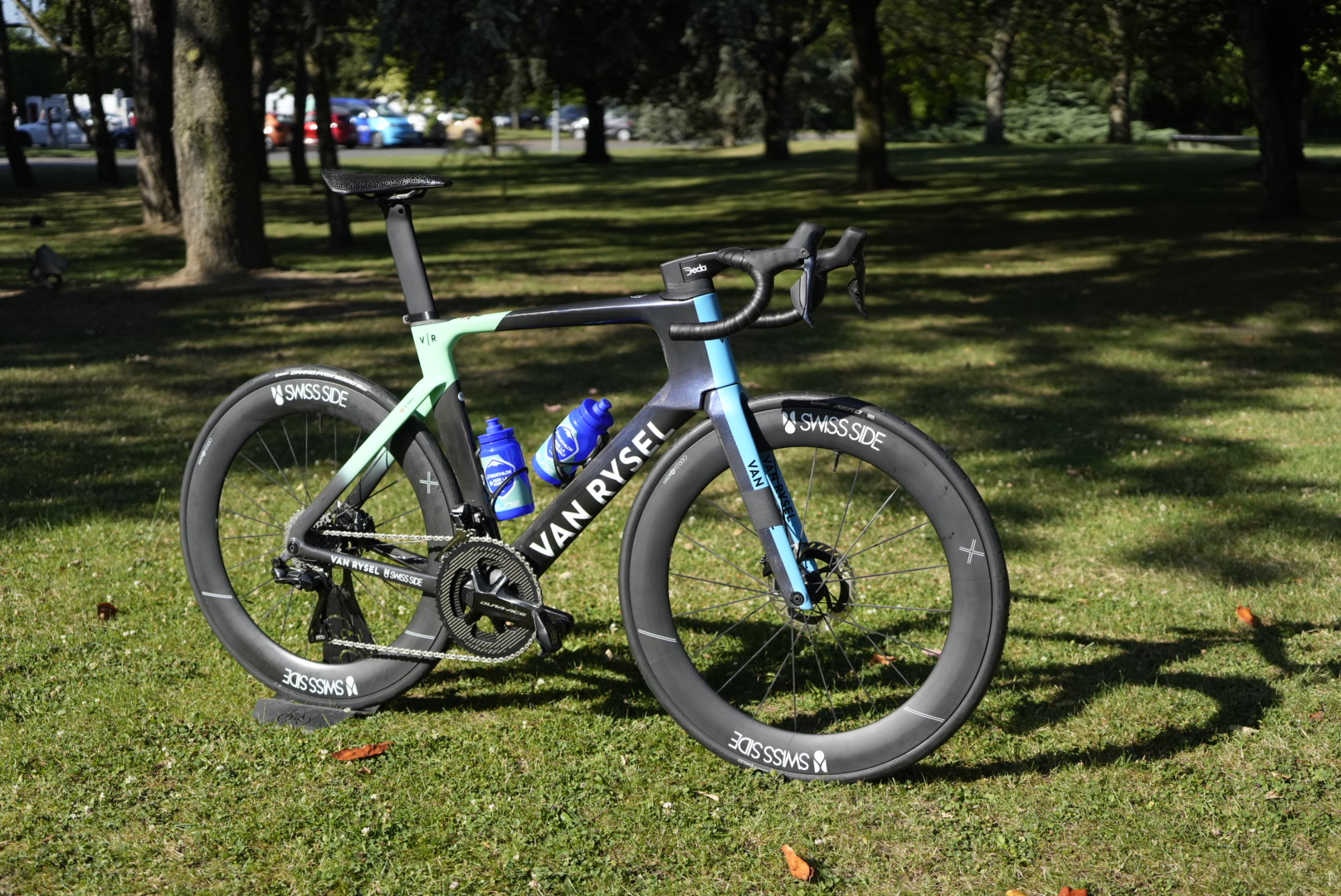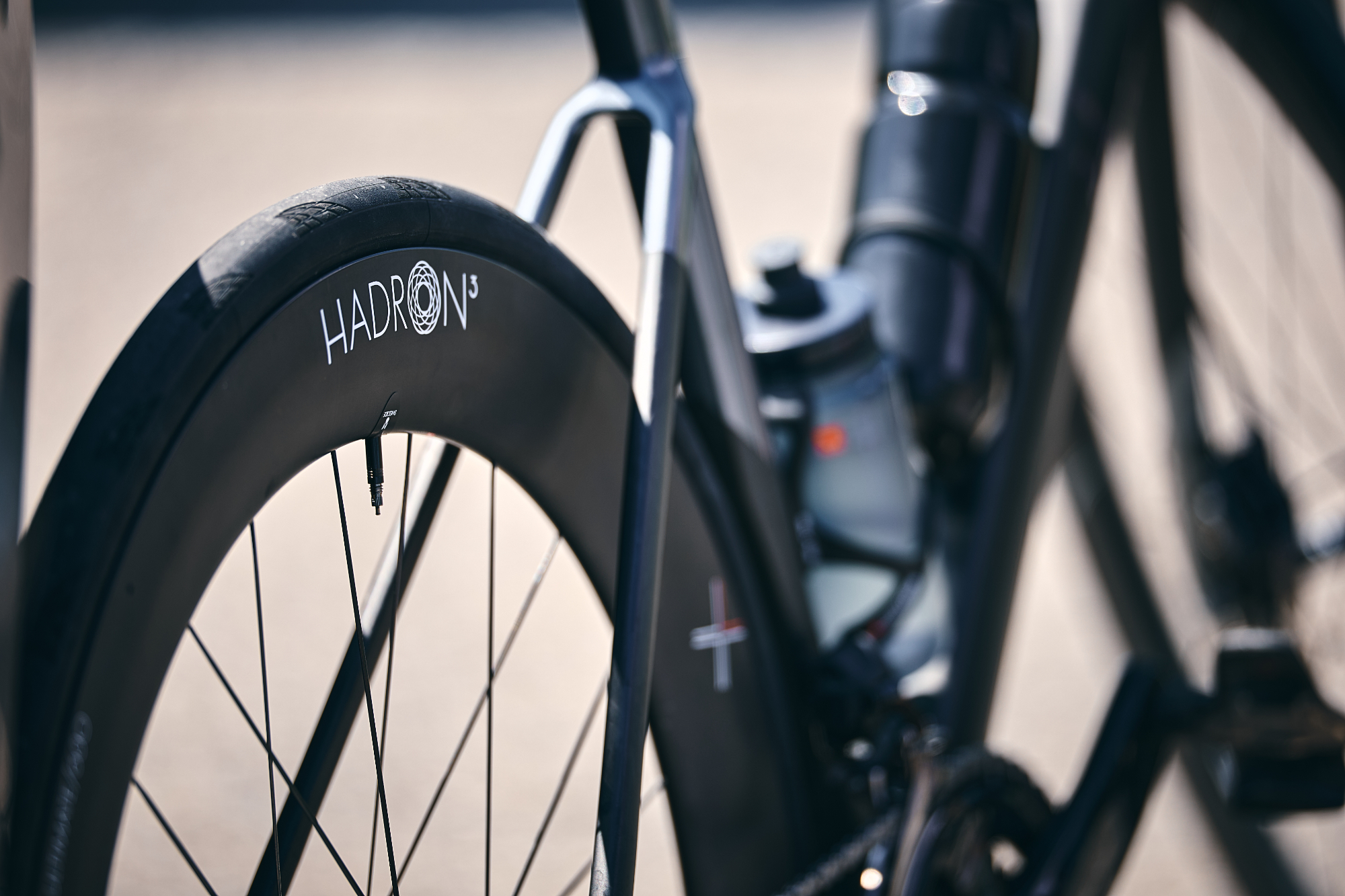
In an open letter to the UCI, wheel manufacturer Swiss Side has expressed its dismay at the recently announced rules to ban rims taller than 65mm in UCI road races. While this rule is set to take effect on January 1, 2026, it will ultimately render Swiss Side’s recently launched 68mm-deep Hadron Ultimate 680 wheel obsolete.
Swiss Side has requested that the UCI reconsider the changes to the equipment regulations, particularly the rim depth limitation, and has asked for it to be delayed until at least 2027, or reworked completely.
The proposed new wheel depth rules follow the UCI’s new restrictions on limiting handlebar width in road events to a minimum of 400mm, which have left riders and bike fitters up in arms due to the ergonomic and potential injury risks it may pose for female competitors.
In the letter, the wheel supplier of WorldTour team, Decathlon-AG2R La Mondiale, outlined that its independent wind tunnel testing, on-road testing, and rider feedback found that its Hadron wheels possess relatively low absolute steering moments compared to some 50-60mm wheel options currently used in UCI WorldTour events.
The proposed new wheel depth rules
In simple terms, the proposed new law states that wheels can be no deeper than 65mm in UCI-sanctioned events, owing to the generalisation that deeper wheels are more prone to instability in crosswinds. The rule also aims to reduce the overall average speeds in races.
Swiss Side is not merely taking a swing at the UCI because its new wheel doesn’t meet the proposed new regulations – the brand has spent innumerable hours and money in R&D to create a wheelset it feels is safer in crosswinds than many of its rivals with shallower rim profiles.
In the letter, Swiss Side reiterated its stance on the matter, highlighting that, as a company, it’s entirely behind improving rider safety.
The latest race content, interviews, features, reviews and expert buying guides, direct to your inbox!
“Swiss Side is fully committed to improving the safety of cycling, both with regards to racing as well as for safety of end consumers. We very much support any initiative which leads to genuine improvements in safety for cycle racing and cycling in general.”
(Image credit: Swiss Side)
Reduced steering moment with improved aerodynamics
Citing its research and in-house testing, Swiss Side states that the Hadron Ultimate 680 wheels demonstrate that rim depth is not the primary factor in determining outright stability and, consequently, safety. To demonstrate this, the Thalwil-based company analysed the steering moment response of three wheels currently in use in the WorldTour (50mm, 60mm and the 68mm Hadron Ultimate) – measured in the same wind tunnel with the identical 28mm tyre.
The results (see graph) indicate that, despite being the deepest section rim, the Hadron Ultimate is the most stable and quantifiably safe wheel due to its aerodynamic characteristics.
“Rim height has a limited impact on stability, predictable handling and safety. Through the objective measurement of the steering moment, we can firmly state that rim depth has far less influence than tyre width, tyre tread pattern (and its effect on the aerodynamic characteristics), and the steering geometry of the bike frame (steering axis angle and trail).
Swiss Side went on to say that wheels with relatively high steering moments, regardless of depth, are due to poor engineering and the result of designing a wheel in isolation, rather than as part of a system (tyre and wheel).
“Deeper rims, apart from having more mechanical stability due to the increased rotating inertia, also allow for better tuning of the aerodynamic and handling characteristics of the wheel. A poorly engineered rim shape or the wrong combination of rim shape and tyre, can lead to a very unstable, unpredictable and potentially unsafe aerodynamic characteristics, regardless of the rim depth.”

(Image credit: Andy Carr)
An unrealstic notice period
Swiss Side is equally vexed by the six-month notice issued by the UCI on the implementation of new equipment regulations and has urged the governing body to be more responsible, objective, and inclusive.
“The development of a high-level road cycling wheel is a 2.5-year development process. The total cost for such a development is a six-figure sum (EUR), and is amortised by the sale of the product, typically over a four-year product life cycle.”
“For Swiss Side, to uncover through the press that the rim depth should be limited to 65mm for UCI road racing from January 1, 2026, only two weeks before launching our new 68mm Hadron Ultimate 680 wheel, was a major and unexpected and extremely costly blow, given the years of development invested in this new wheel.”
Swiss Side continued: “The UCI, as cycling’s governing body, should always be seen as responsible, objective and inclusive. The current actions are not consistent with these values.”

(Image credit: Swiss Side)
The way forward
While Swiss Side can demonstrate that its profile for a 68mm rim has a lower steering moment than other rims, the company has also indirectly acknowledged that steering moment is relevant to rider safety. Where diversity in wheel design and the aerodynamic testing benchmarks differ from wind tunnel to wind tunnel and company to company, would the adoption of Swiss Side’s aero IP solve the problem?
We don’t see Swiss Side giving away its intellectual property to its rivals anytime soon, but perhaps a new testing protocol standard for wheels and equipment should be floated by the UCI in consultation with industry experts – that way, equipment can be validated and benchmarked to meet specific parameters rather than blanket bans across the board.
What do you think? Let us know in the comments below.

